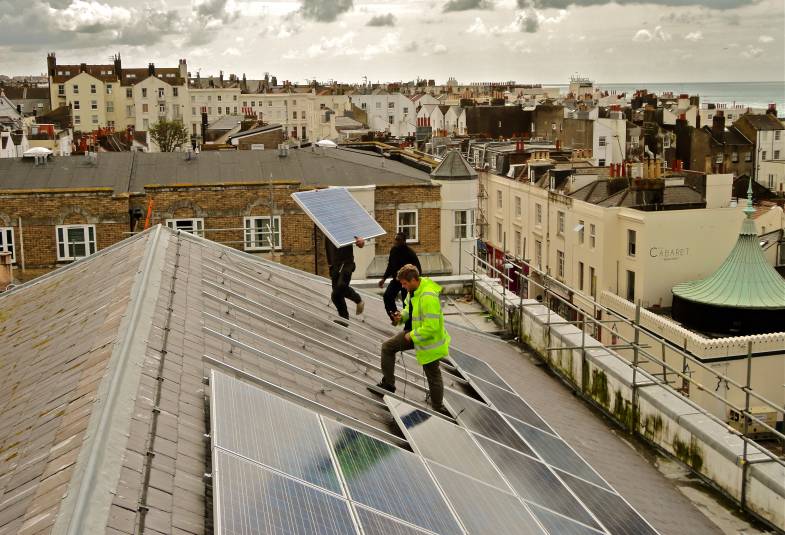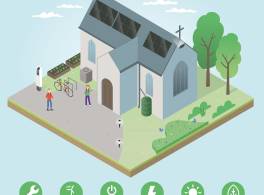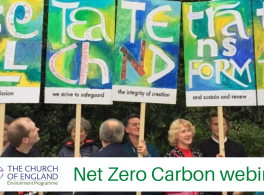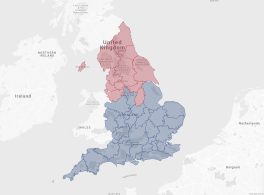Before you start
There are several kinds of renewable energy a church might consider, of which the main ones are
- solar PV (using daylight to make electricity, which is used to heat and light the church),
- heat pumps (using the heat from the ground, air or water near the church to heat the church), and
- biomass (burning wood pellets or chips in a boiler, instead of oil or gas).
Very occasionally, other renewables are a possibility, such as solar thermal, wind turbines or hydropower.
You can find a map of all the existing installations on churches around the country here

Solar PV
Solar photovoltaics (PV) is a well-established technology that generates electricity from daylight.
Systems consist of panels and inverters. The panels can be fixed on to a roof of a building or ground-mounted on land. The inverters take the electricity generated from the panels and convert it, so that it can integrate with standard electricity in the grid.
The electricity generated by the system can be utilised in many ways. Usually, it is consumed by the building it is connected to, reducing the amount of electricity that the building uses (“imports”) from the national grid. It can also be used to charge batteries for use in the evenings when the lights and heating are on.
For listed buildings and conservation areas, planning constraints may mean that panels on the church roof have to be hidden from street view. (Church halls and schools are less likely to be constrained in this way, and may be able to install them under permitted development rules.)
Notwithstanding whether planning permission is or isn’t required, faculty permission is always required and we have provided guidance on this process, which is available here. All applications are considered on a case-by-case basis. Well-designed, well-prepared applications are encouraged, and the guidance aims to help churches prepare these applications and to design the most effective option for their building. Solar panels being visible does not necessarily mean that they are unacceptable, however, visibility on a listed building does mean that a stronger case needs to be made for the benefits of the application.
Solar PV systems are most suitable where you have a high, consistent level of daytime electricity usage and a well-maintained, structurally sound roof. Finding the right design and the correct fixing system is key, especially when installing on or near listed buildings.
They are generally “the icing on the cake”; the final part of a package of measures, after other changes have been made to save energy and make systems efficient.
Your first step would be to ask for a free desktop survey from an MCS certified installer.
- Read our brief guide to solar PV here
- Watch our webinars on solar PV for churches here
- Find links for case studies at the bottom of this page
- Thinking about batteries? Read the Historic England guidance here.
If you are interested in installing and using Solar Panels within your church, please review our guidance note here. The guidance aims to help PCCs establish whether solar panels are a good choice for their church and what steps should be taken to produce a good faculty application.
Heat Pumps
Heat pumps are a low-carbon, efficient method of electric heating.
Heat pumps act as a fridge in reverse. They use electricity to run a pump, compressor and heat exchanger, which move heat from a low-grade source (the air, soil or water nearby) and “upgrade” it to provide warm water in the range 40-70°C, or sometimes warm air, which is then circulated around the building.
Ground source heat pumps pump water through wipes which either snake just under the surface or within a deep borehole.
Air source heat pump pull-through air using a fan.
Water-source heat pumps pump water through pipes in a nearby river or lake.
The Coefficient of Performance (CoP) of a heat pump is the ratio of how much useful heat is obtained compared to the energy expended by the pump to “lift” the heat from the ground, air or water. For air-source heat pumps, this is usually in the range 2-3, for ground source heat pumps it is usually 3-4.
So, with a COP of 4, you receive 4 times more heat energy in kWh than you pay for in electricity. That makes them a low-carbon heat source, especially if the electricity is from 100% renewables. You have not broken any laws of physics! The “missing” heat has come from the air, ground or water around the church.
Heat pumps that produce water are efficient at a lower temperature than a conventional boiler, and so work best either with larger than usual radiators or with underfloor heating. They are not a responsive form of heating, and so are best used in very regularly used buildings throughout the week, rather than those churches only used a few hours per week.
They also may not cope in building with a high heat loss, like some churches.
Biomass
A biomass boiler provides heat and hot water and can be connected to existing heating systems. Biomass boilers have been around for many years and can be considered a mature technology.
They come in a variety of sizes suitable for different thermal loads and are designed to operate using two different types of fuel, wood chip or wood pellet. Wood chip is cheaper than wood pellet but takes more room to store for the same amount of energy.
They are probably more suited when a property is off the gas grid and electric heating is not viable; providing a decarbonised alternative to buildings that are currently using oil boilers.
The wood chips/pellets should be from a sustainable source.
Biomass boilers cannot be installed if you are in an Air Quality Management Area.
Other options
Very occasionally one of the following forms of renewables is viable:
- a wind turbine, changing the wind into electricity
- micro hydro power, changing the power of a local river into electricity
- solar thermal, using sunshine to warm water.
Finding funding
You can find our national list of chartable grants for churches on the Parish Resources website and a useful list of opportunities on the Community Energy England website.
Grant funders may be more likely to pay for the technology if you include it in a larger project as they are increasingly asking for the integration of environmental measures into applications.
Solar panels will save money by reducing the amount of electricity the church needs to purchase from the grid, and there is also a small Smart Export Guarantee payment for each kWh exported to the grid.
There is a significant capital outlay for heat pumps, but they run efficiently. It is expected than a new Clean Heat Grant will be introduced by the government, but this has not yet been confirmed.
There are also a number of community energy groups looking for installation sites. They are keen to work with churches. In this form of funding, the community energy group in effect ‘leases’ the roof, the church benefits from reduced price electricity, and the group raise a community share issue so that local people invest in the installation and get a small rate of return. See the Community Energy England website for more information.
Applying for faculty
Installing a renewable energy system can have a major impact on your church building so it’s important to think about how best to reduce that impact.
Given the speed at which technologies are evolving it is also important to make sure that installations are reversible where possible.
You will probably need the following supporting information for your faculty application:
- An introductory statement providing background information and setting the work in context
- Statement of needs for the work
- Statement of significance for the building or building remains affected by the work
- Description of the proposed work and drawings
- Technical specifications (e.g. installation fixings, cable runs, maintenance requirements and allowance for contingencies, etc)
- Robust engineering statement based on appropriate calculations (e.g. for roof-mounted solar panel installations, the weight of the array and its housing, wind loading and dynamic stresses, etc)
- An impact statement by your architect or archaeologist (e.g. if proposing a ground source heat pump near burials)
Your Diocesan Advisory Committee secretary will be able to give you advice



